Don't wanna be here? Send us removal request.
Text
Trust Issues with Bloggers
Many of us have favorite bloggers and influencers we follow and trust their recommendations for products. Social media marketers sometimes pay these bloggers and influencers to talk about certain products. This becomes more of a counterfeit conversation and it becomes harder to decipher whether the opinons of these bloggers and influencers is entirely their own or just a marketing ploy they are being paid for. According to AdAge, only a mere 4% of people trust traditional advertising and marketing, therefore social media marketing can be effective but not necessarily ethical.
For example, one prominent beauty blogger, Marianna Hewitt, often times makes videos on her YouTube channel that are sponsored by various companies. Beauty addicts want the most honest reviews of products and it seems like we are being conned when you scroll down and read “this video was sponsored by…” Hewitt had one video recently posted on October 19, 2016 called “How to Transform Your Beauty Routine for Fall.” Naturally, I was excited to watch it until I scrolled down and read “this video is in partnership with Essie and Allure.” The problem is these videos look so authentic that unless you are looking for the disclaimer, you can’t always easily find it. While on Instagram Hewitt hashtags “sponsored” in her photos, on Youtube, the sponsorship is much less obvious. These kind of counterfeit conversations seem like a hoax and it causes some readers to no longer trust their favorite bloggers and influencers.
“How to Transform Your Beauty Routine for Fall.” https://www.youtube.com/watch?v=VcZpMhKlHVs
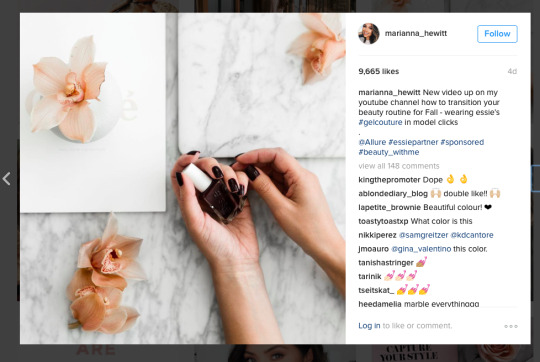
AdAge - http://adage.com/article/media/marketers-media-trusts/298221/
https://twitter.com/mmedon2_/status/790597798701862913
2 notes
·
View notes
Text
The “Kon” of The Kardashians
Kim Kardashian has a lot of social capital, is an opinion leader and has a lot of referent power over her followers. However, some of Kim’s posts do receive backlash. Kim once posted on her Instagram an endorsement for the pharmaceutical drug, Diclegis. After seeing the post, the FDA wasn’t too happy about this and sent a letter of warning to the executive VP of the drug company to correct the post because it is misleading and doesn’t describe the potential risks associated with using the drug. When someone like Kim Kardashian, who has so much social capital and is an opinion leader, can sway many people to use a product, we come across an issue of ethics in social media marketing. Only Kim herself can truly know whether she really likes the drug or if she is simply endorsing it to make a profit off of it. This can be seen as what I like to call, “The Kon of the Kardashians,” because they are such powerful opinion leaders and because it seems like they are speaking to you personally, they can easily promote something that is cheap, doesn’t work or comes with side effects and people will still buy into it because it is a Kardashian-endorsed product. The “Kon of the Kardashians” has created so many people who will buy anything with the Kardashian name, and while this may be lucrative for the Kardashians and the manufacturers involved, it isn’t in the best interest of the people - it’s more of a con.
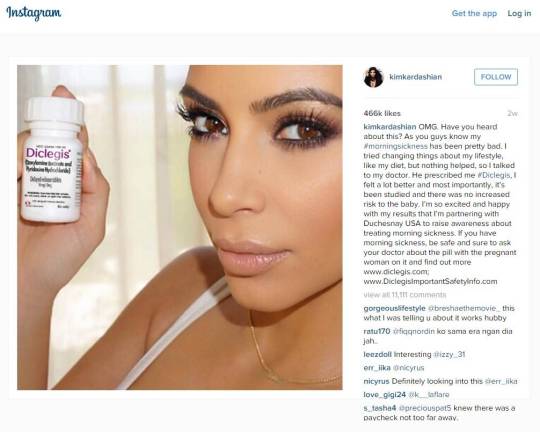
In this article, we can see Kim was forced to correct her post:
http://gizmodo.com/fda-forces-kim-kardashian-to-post-correction-for-her-1727696469
https://twitter.com/mmedon2_/status/783779470473920512
1 note
·
View note
Text
Kylie Cosmetics Case Study
There are many cosmetics brands in the world. While some cosmetics companies choose to market themselves to all women by simply looking at demographics, others choose psychographic segmentation. Kylie cosmetics is a good example of psychographic segmentation because the company has chosen to market their products according to lifestyle, particularly focusing on the attitudes, interests and activities of their customers. Mainly, Kylie Cosmetics customers are young women who have an interest in make up and the Kardashians – therefore the company can cater to these women by giving them what they are most interested in. The “Kylie look” has become a cultural idea and this cultural idea has a large influence on the products that customers purchase. This company uses this attitude of loving and wanting to be like Kylie to market their products. Next, they look at activities these young women participate in. For example, many of them are avid users of Instagram, Pinterest, Snapchat and of course, love playing around with Makeup. Kylie Cosmetics combines these activities with its customer’s attitudes and creates content that their users can relate to. All of this comes down to the fact that these customers have an interest in the Kardashians and looking/feeling like one of them and therefore the most effective marketing method for Kylie Cosmetics is clearly psychographic segmentation.
This article below is a good example of just how much influence Kylie has and how popular her cosmetic brand is because it choose to market through psychographic segmentation:
http://www.elle.com/beauty/makeup-skin-care/news/a33867/kylie-jenner-new-lip-kits-sell-out-in-10-minutes/
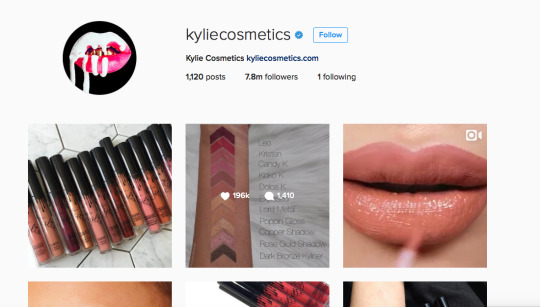
If you were to scroll through Kylie Cosmetic’s Instagram, you would find plenty of posts of young women sporting the “Kylie look” and also even Kylie herself
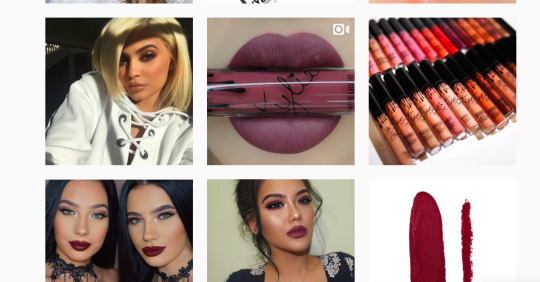
https://twitter.com/mmedon2_/status/778364205745352704
1 note
·
View note
Text
Make it Personal: How Social Media Turned Colourpop Cosmetics into a Successful Beauty Brand
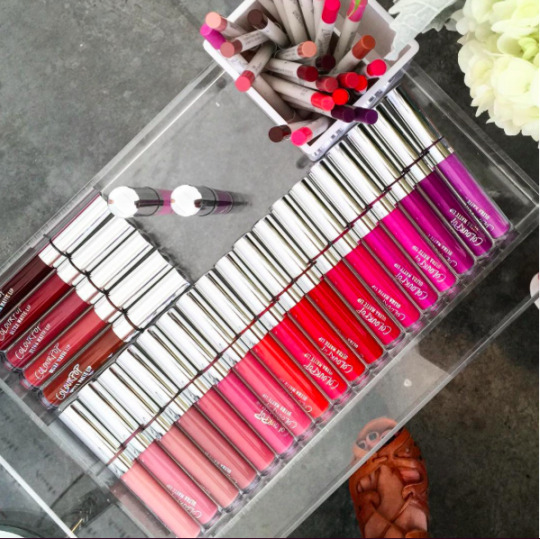
If you aren’t on social media, perhaps you aren’t sure what Colourpop is. However, Colourpop Cosmetics is undoubtly Insta-famous, in fact they are now at 3.1 million followers on Instagram. Colourpop has managed to gain a massive following using the power of social media. The brand launched off of social media and is based online, they do not have a physical store. Colourpop utilizes the LARA framework successfully – they are a successful company because they listen to their customers and act on their customer’s conversations. Social media makes it easier to interact with customers and by interacting with customers, a brand is no longer just a brand. It starts to feel personal; the consumer is involved in the brand.
To rapidly increase awareness of the Colourpop brand, Colourpop uses social media influencers. These social media influencers, often times dubbed “beauty gurus,” have millions of followers of their own and promote the Colourpop brand simply by wearing the makeup on their social media sites such as Instagram. The influencers influence desire, since many women want to be like them and will try out recommened brands. These women (and even men) who try out Colourpop spread the word about the makeup brand on their own social networking sites, creating a cycle where as long as Colourpop maintains an active presence and listens to customers, they will be gaining more business through the power of social media.
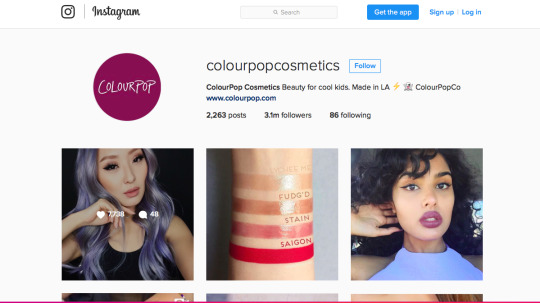
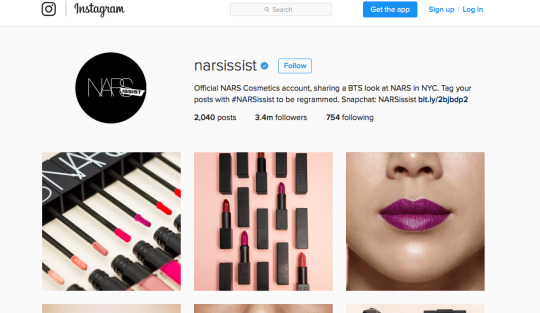
Colourpop was founded in 2014. Comparatively Nars, founded in 1994, has 3.4 m Followers
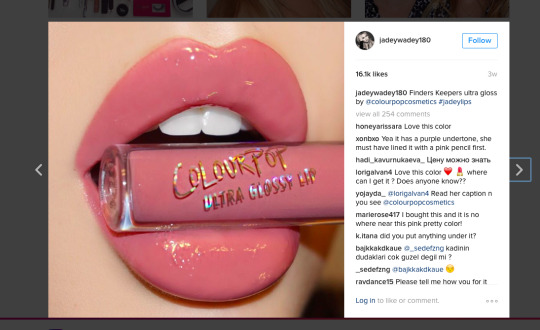
Social media Influencers influence desire in consumers to try out the Colourpop brand, despite the fact the store is based solely online
You can learn more about the Colourpop success story here: http://fashionista.com/2016/01/colourpop-instagram-beauty
https://twitter.com/mmedon2_/status/771157127947845632
1 note
·
View note